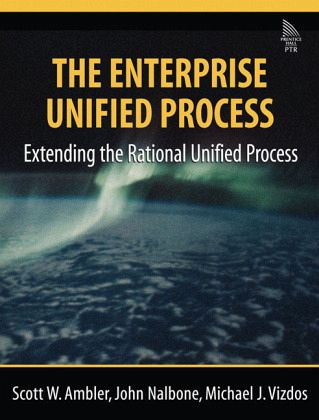Nicht lieferbar

The Enterprise Unified Process
Extending the Rational Unified Process
Versandkostenfrei!
Nicht lieferbar
This book describes the fundamentals of the Enterprise Unified Process(EUP), an extension of the IBM/Rational Unified Process (RUP) that helpsmake it a full IT lifecycle. The book is, above all, practical. It gives a short, tothe point description of what the EUP is and how it addresses the shortfalls ofthe RUP that most organizations will encounter. While there are several RUPbooks, no single book address organizationsal issues that the EUP addresses(namely, where the RUP falls short). With this in mind, the authors provide abrief overview of the RUP but focuses mainly on the issues that the ...
This book describes the fundamentals of the Enterprise Unified Process
(EUP), an extension of the IBM/Rational Unified Process (RUP) that helps
make it a full IT lifecycle. The book is, above all, practical. It gives a short, to
the point description of what the EUP is and how it addresses the shortfalls of
the RUP that most organizations will encounter. While there are several RUP
books, no single book address organizationsal issues that the EUP addresses
(namely, where the RUP falls short). With this in mind, the authors provide a
brief overview of the RUP but focuses mainly on the issues that the RUP most
ignores (e.g. cross-project and enterprise issues). This is a how to guide using
real-world experiences and examples for the practitioner. This book is not
product specific and it is tool agnostic. Enterprise Unified Process is built on
being an add-on to the RUP, instead of a detractor.
(EUP), an extension of the IBM/Rational Unified Process (RUP) that helps
make it a full IT lifecycle. The book is, above all, practical. It gives a short, to
the point description of what the EUP is and how it addresses the shortfalls of
the RUP that most organizations will encounter. While there are several RUP
books, no single book address organizationsal issues that the EUP addresses
(namely, where the RUP falls short). With this in mind, the authors provide a
brief overview of the RUP but focuses mainly on the issues that the RUP most
ignores (e.g. cross-project and enterprise issues). This is a how to guide using
real-world experiences and examples for the practitioner. This book is not
product specific and it is tool agnostic. Enterprise Unified Process is built on
being an add-on to the RUP, instead of a detractor.



